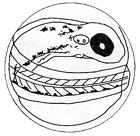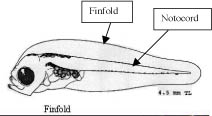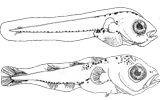

| Current Projects | K-12 | Interships, fellowships, grants | Public Education & Outreach | Continuing Education | Resources | Archives | |
We are committed to educating our citizenry about the opportunities and challenges associated with continued expansion into the marine realm. Our goals in this area include giving K-12 students hands-on exposure to fisheries and underwater robotics, providing coastal managers and researchers with workshops and symposia, and communicating the results and implications of our research to as wide an audience as possible. We will continue to foster collaboration with other groups and institutions in these efforts. |
 |
Project
Title: Finfish
Hatchery and Marine Education Center Project Summary: Farm raising fish for consumption is not a new concept, but there are not many marine fish species that are commercially available. MIT Sea Grant recognized the need to aid in the development of aquaculture in Massachusetts and started a Boston Aquaculture Initiative Program to deal with these issues. In January of 1998, MIT Sea Grant's Marine Finfish Hatchery began operation in the Charlestown Navy Yard. In 2003, the hatchery moved north to our new aquaculture facility, located at the Gloucester Maritime Heritage Center. |
|
| FinFish Hatchery: Objectives | Facility | Aquaculture | Classroom | Outreach | Projects | Links | ||
Note: words
in red link
to an online glossary (or dictionary) of related terms. Fish Life
Cycle
Yolk sac larvae can survive for 2-4 days by feeding off their yolk sac food supply. This is called endogenous feeding. The length of the yolk sac period for larvae is dependent on the culture temperature and the species of fish. The warmer the water, the faster the fish will use up their yolk reserves. Once the larvae mouth has formed and the eyes are partially developed, the larvae can be offered a live feed.
Feeding on organisms or particles in the water column is called exogenous feeding. Live
feed is essential to the early stages of developing larvae. Because their eyes are underdeveloped at hatch, the larvae need to be offered a feed that is moving around to help stimulate a feeding response.
When the larvae hatch, they have a finfold around their whole body that looks like an outline when observed under a microscope. This fold will eventually develop into fins, beginning with the process of metamorphosis.
Juveniles are usually resistant to stress (temperature, water quality, etc.) over time. As long as the culture environment remains healthy, the fish should thrive on dry feed and show significant growth rates. Juveniles are not considered adults until they become sexually mature. The developmental cycle is complete once spawning to egg and larvae to juvenile and adult has been accomplished.
Adult
|
||
 |
||
 Larvae
Larvae


 Juvenile
Juvenile
 Adults are characterized by their ability to reproduce.
Adults are characterized by their ability to reproduce.